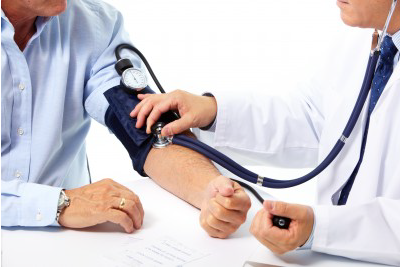 New Health Guide
New Health Guide
There is a saying that goes “what you do not know cannot hurt you”. This is the case when it comes to High blood pressure (HBP), also known as hypertension. High blood pressure is also called the “silent killer” because many people do not have visible symptoms and are thus subsequently unaware that they have HBP. Nearly 1 in 3 adults in the US have high blood pressure—this is according to the American Heart Association.
However, uncontrolled HBP can damage body organs and increase the risk of vision loss, kidney disease, stroke and coronary heart disease. Your doctor may prescribe medication such as ACE inhibitors or beta blockers that will help control blood pressure. However, these medications do have side effects like insomnia, dizziness and leg cramps. It is, therefore, advisable that you take natural measures to control your blood pressure. These measures have proven to be both safe and effective.
 If you have already been diagnosed with HBP (systolic pressure of over 140 and diastolic pressure of over 90) you might worry about taking medications to lower those numbers.
If you have already been diagnosed with HBP (systolic pressure of over 140 and diastolic pressure of over 90) you might worry about taking medications to lower those numbers.
Your lifestyle plays a major role in treating your HBP. If you manage to successfully control the blood pressure with just having a healthy lifestyle, you may reduce, delay or avoid the need for medication. The following lifestyle changes will help you lower your blood pressure and even keep it down.
When your weight increases, so does your blood pressure. By just losing ten pounds (about 4½ Kg) you will have helped lower your blood pressure. If you lose more weight, your blood pressure also goes down. If you are taking medication for your blood pressure, losing weight makes it more effective. You can talk to your doctor and decide on a target weight and how to achieve it.
Other than shedding a few pounds, watch your waist line. When your waist carries too much weight, you are at a greater risk of HBP. In general:
Exercise helps to lower your blood pressure and also helps you lose weight. Consult your doctor first before exercising because your blood pressure might be very high, then your doctor might want to have it under control first before you start exercising. Exercises that will most likely lower your blood pressure include skiing, skating, tennis, cycling, swimming, aerobic dancing, stair climbing, jogging, walking and any other exercise that will elevate and sustain your pulse for about 20 minutes. People who have hypertension should not try non-aerobic exercises like chin-ups, push-ups and weight lifting as they may be dangerous. They should only be done with the doctor’s consent.
Eat a diet that contains dairy products (low-fat), vegetables, fruits and whole grains. Skimp on cholesterol and saturated fat to lower your BP by up to 14mm Hg. This eating plan is known as DASH (Dietary Approaches to Stop Hypertension). The DASH diet encourages sodium reduction in a diet and consumption of nutrient rich foods that will help to lower your BP like magnesium, calcium and potassium. DAS diet is also recommended to prevent diabetes, stroke, heart disease, cancer and osteoporosis. Changing your eating habits is not easy but the following few steps will help you adopt a healthier lifestyle:
People like the elderly, African Americans, and those who have a family history with HBP are more likely to have a salt sensitive HBP. As such, people with HBP should lower their sodium levels to 1,500 mg per day (half a teaspoon of salt contains 1,200 mg of sodium). When taking processed foods, watch the sodium levels. Instead, season food with lemon, herbs, salt-free seasonings and spices.
People who take more than two alcoholic drinks daily have a 1 to 2 times increase in hypertension. Association between HBP and alcohol is quite noticeable especially when alcohol intake exceeds 5 intakes daily—the more the alcohol, the stronger the link to hypertension.
The National Institute on Alcohol abuse and alcoholism says a standard drink is 12 ounces of beer, 1.5 ounces of distilled spirits (80-proof) and 5 ounces of wine. Each alcoholic drink roughly contains the same absolute alcohol amount, approximately 12 grams or ½ ounce.
If you are a smoker or use tobacco, you should quit. Smoking can increase your chances of getting HBP and damage your blood vessels. Smoking can also make HBP related health problems worse. If you find it hard to quit smoking, join a support group. There are many community groups, workplace and hospitals that offer classes to help you quit smoking.
Caffeine effects on blood pressure have long been debated upon by scientists. One scientist from Duke University Medical Center found that consumption of 500 mg of caffeine (8 ounce coffee cups) increased a person’s blood pressure by 4 mm Hg. The effect lasted until bedtime. Caffeine tightens blood vessels and magnifies stress effects. When a person is stressed, the heart pumps more blood boosting blood pressure. Caffeine exaggerates this effect.
Anxiety or stress increases blood pressure temporarily. Take time to find out your sources of stress, for example, finances, illness or work. Thereafter, consider safe ways of reducing or eliminating them.
It you are unable to eliminate all stressors, find a healthier way of coping with them. Take deep-breathes, mediation, yoga or a massage. If self-help proves futile, try professional counseling.
Check this video out on tips to control HBP: